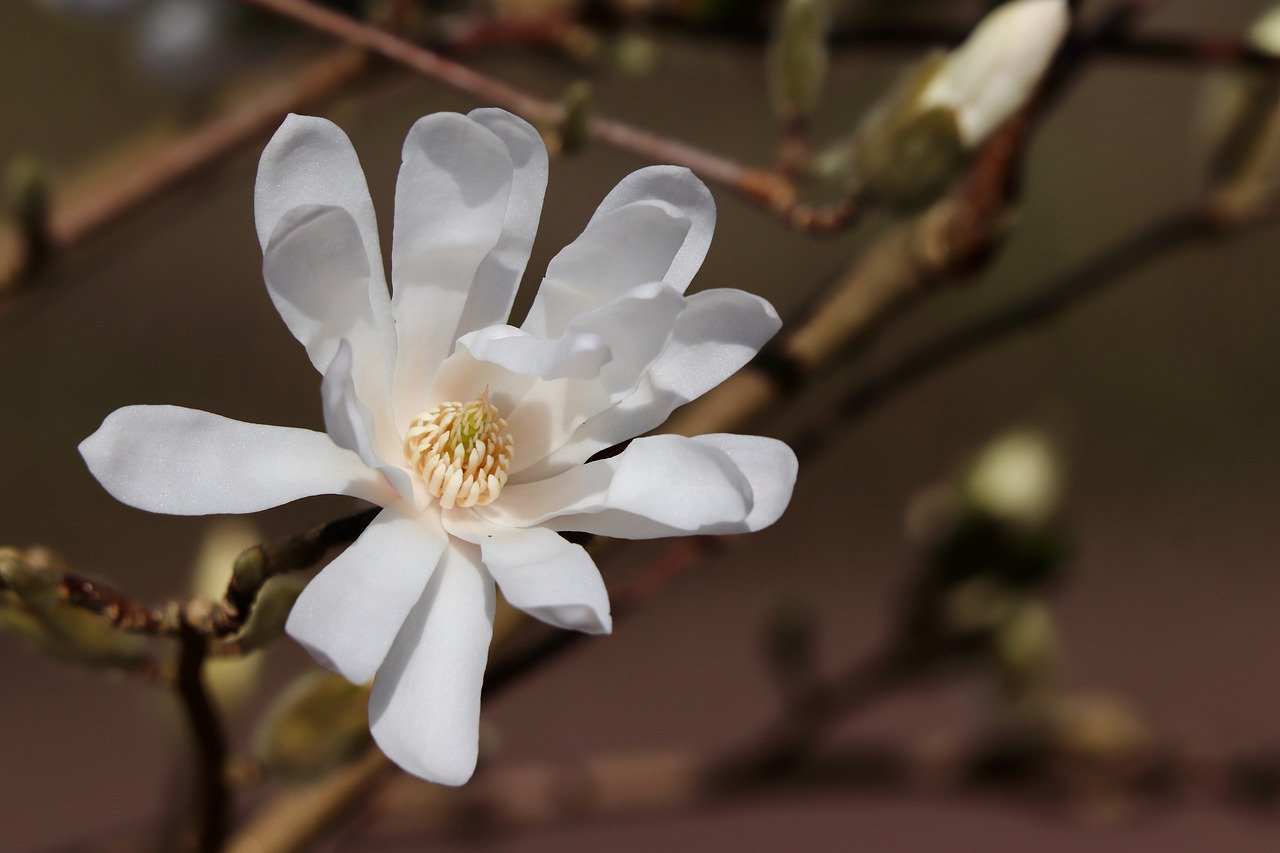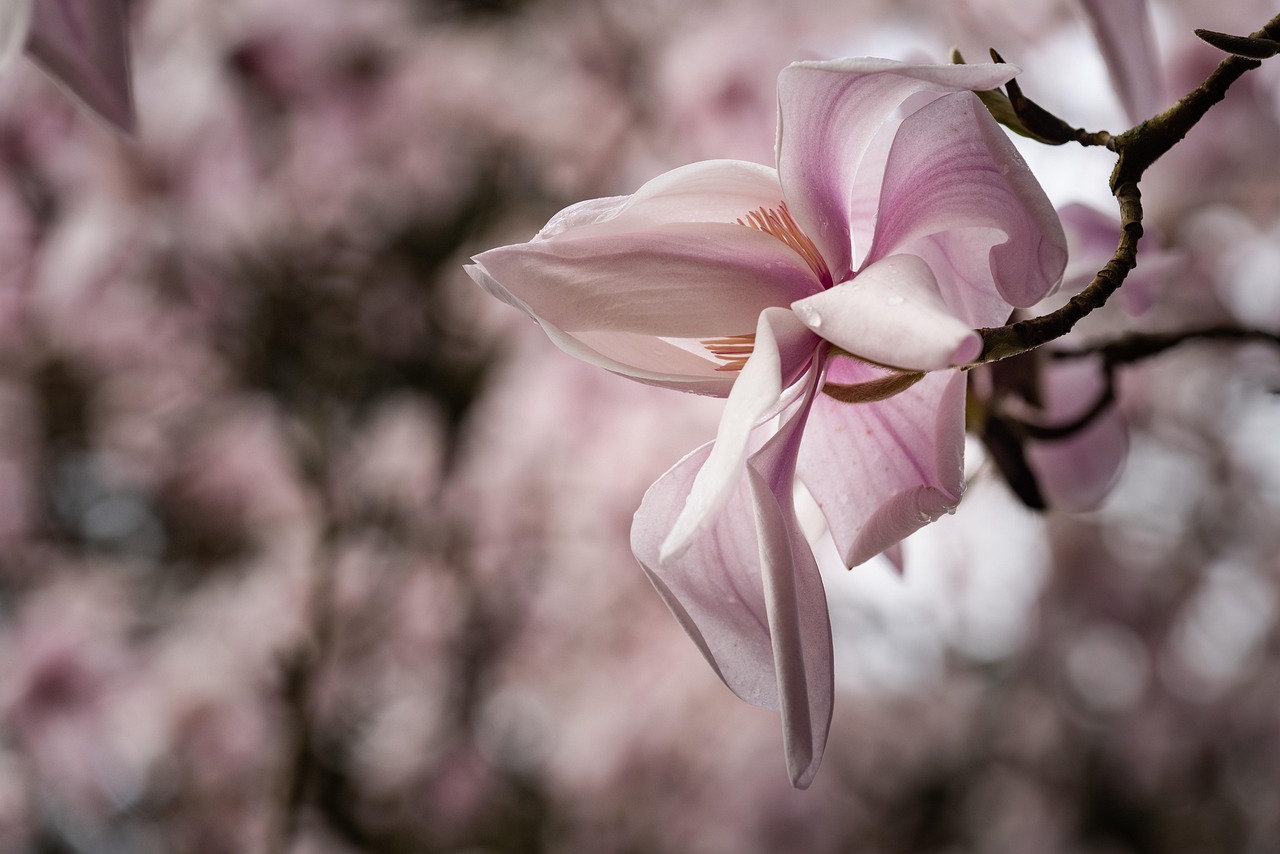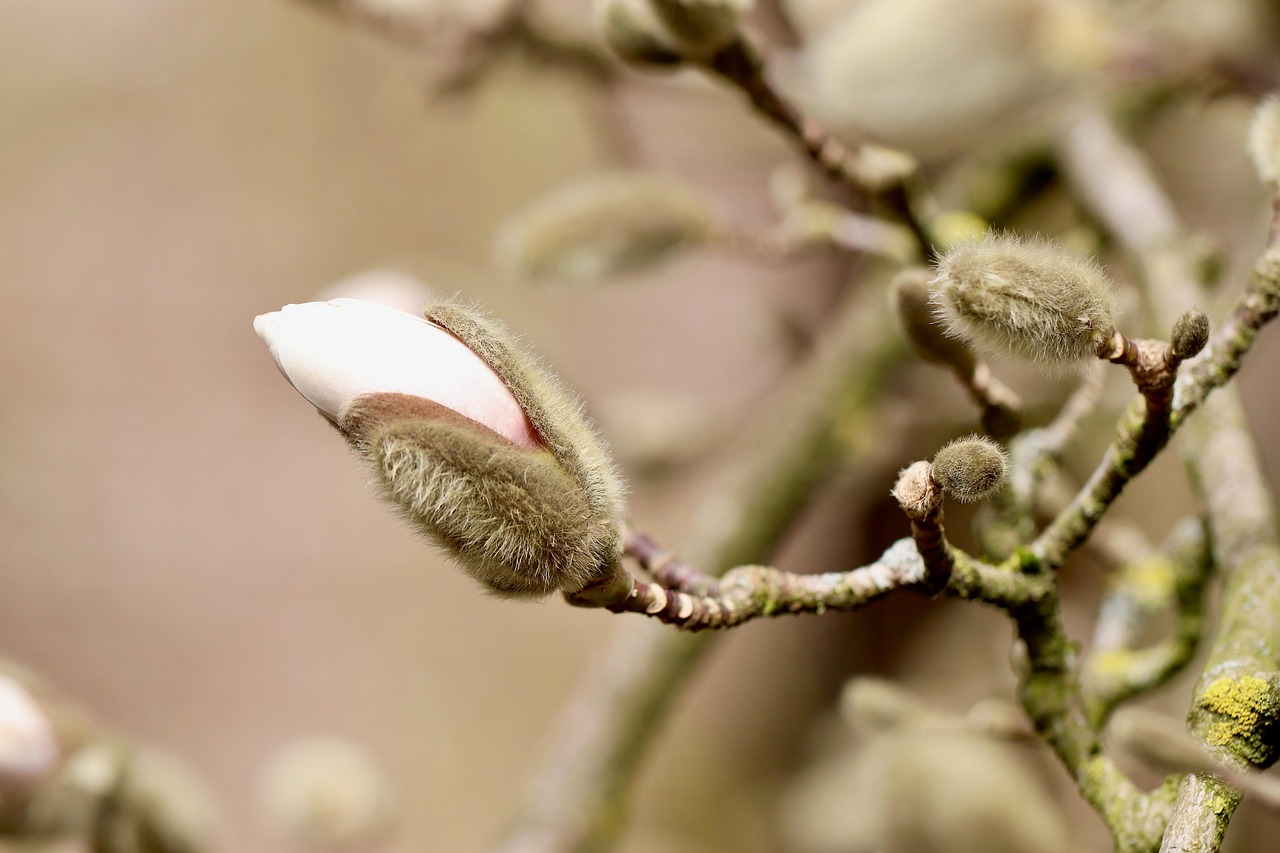Magnolias are more than just beautiful trees and shrubs; they are a testament to nature’s artistry. With their stunning blossoms and unique foliage, magnolias can transform any garden into an enchanting landscape.
Originating from the southern regions of the United States, magnolia species are known for their fragrant flowers and glossy leaves. These plants belong to the family Magnoliaceae and can range from towering trees to compact shrubs. Their versatility makes them suitable for various garden styles, from formal landscapes to wildflower gardens.

The allure of magnolias lies not only in their beauty but also in their resilience. Many varieties thrive in a range of soil types and climatic conditions. This hardiness makes them a favorite among gardeners seeking low-maintenance yet striking plants. Additionally, magnolias are often among the first to bloom in spring, heralding the arrival of warmer weather with their vibrant colors.
Types of Magnolias You Should Consider
When selecting magnolias for your garden, it’s essential to understand the different types available. Each type has unique characteristics that can enhance your landscape. Below are some popular species and hybrids that stand out for their beauty and adaptability:
- Magnolia grandiflora: Also known as the Southern Magnolia, this tree features large, fragrant white flowers and dark green leaves that are glossy on top and brown underneath.
- Magnolia stellata: The Star Magnolia is a smaller tree or large shrub with star-shaped white flowers that bloom in early spring. It is perfect for smaller gardens or as a focal point.
- Magnolia soulangeana: Commonly referred to as the Saucer Magnolia, it has large, tulip-shaped flowers that range from white to deep pink. This hybrid is a popular choice for its showy blooms.
- Magnolia liliiflora: Known as the Lily Magnolia, it features slender petals that are purple on the outside and white on the inside. It is an excellent addition to mixed borders.
- Magnolia ‘Jane’: A hybrid between M. liliiflora and M. stellata, this compact tree produces stunning purple-pink flowers that are resistant to late frosts.
Each magnolia variety has its specific requirements regarding sunlight, soil type, and watering needs. Understanding these aspects is crucial for successful growth and flowering.
Growing Conditions for Magnolias
Magnolias thrive in well-drained soils with plenty of organic matter. They prefer slightly acidic to neutral pH levels. Here are some key conditions to consider for planting magnolias:
| Growing Condition | Ideal Requirement |
|---|---|
| Sunlight | Full sun to partial shade |
| Soil Type | Well-drained, rich in organic matter |
| Watering | Regular watering; avoid waterlogging |
| Pest Resistance | Generally resistant but watch for scale insects |
When planting magnolias, it is advisable to space them appropriately to allow air circulation and prevent disease. Regular mulching can help retain moisture and suppress weeds around the base of the plants.
The growth rate of magnolias varies depending on the species. Some may take several years before blooming, while others can flower within a few seasons. Patience is vital as you nurture these magnificent plants into maturity.
Popular Varieties of Magnolias

Choosing the right variety of magnolia for your garden can significantly impact its aesthetic appeal and overall health. Below, we explore some of the most popular magnolia varieties, each offering unique characteristics that make them stand out.
1. Southern Magnolia (Magnolia grandiflora)
The Southern Magnolia is perhaps the most iconic of all magnolias. It can grow up to 80 feet tall, making it a stunning focal point in larger landscapes. The tree produces large, creamy white flowers that are not only beautiful but also emit a delightful fragrance. The evergreen leaves provide year-round interest.
2. Star Magnolia (Magnolia stellata)
This smaller magnolia grows to about 15-20 feet in height. It is highly valued for its stunning spring blooms, which appear before the leaves unfurl. The flowers are star-shaped and typically white or pale pink. The Star Magnolia is an excellent choice for smaller gardens or as a decorative shrub.
3. Saucer Magnolia (Magnolia soulangeana)
The Saucer Magnolia is known for its large, tulip-shaped flowers that can be pink, white, or purple. This deciduous tree grows to about 20-30 feet tall and is a favorite in many landscapes due to its dramatic blooms in early spring.
4. Little Girl Series
This group of hybrids includes varieties such as ‘Jane,’ ‘Betty,’ and ‘Ann.’ These compact trees are perfect for small gardens and produce vibrant flowers in shades of pink and purple. They are hardy and resistant to late frosts, making them reliable choices for spring blooms.
Planting and Care Tips

To ensure your magnolias thrive, it’s essential to follow specific planting and care guidelines. Here are some useful tips to help you succeed:
- Timing: The best time to plant magnolias is in the spring or fall when temperatures are moderate.
- Location: Select a spot that receives full sun or partial shade, keeping in mind that too much shade can diminish flowering.
- Spacing: Ensure adequate spacing between plants to allow for their mature size and promote airflow.
- Mulching: Apply a layer of mulch around the base to conserve moisture and suppress weeds.
- Watering: Water newly planted magnolias regularly until established, then monitor the soil moisture during dry spells.
Common Pests and Diseases
While magnolias are generally resilient, they can still be susceptible to certain pests and diseases. Being aware of these issues can help you take preventive measures:
Pests
- Scale Insects: These pests can cause leaf yellowing and drop. Regular inspection and treatment with insecticidal soap can help manage them.
- Aphids: While not usually harmful, they can weaken the plant by sucking sap. Natural predators like ladybugs can help control their population.
Diseases
- Leaf Spot: Fungal infections can cause spots on leaves. Ensure good air circulation and avoid overhead watering to minimize risk.
- Crown Gall: This bacterial disease creates galls on roots and stems. Remove infected plants immediately to prevent spreading.
Regular monitoring and proper care can help mitigate these challenges, ensuring your magnolias remain healthy and vibrant throughout their growing seasons.
Designing with Magnolias
Magnolias can serve as stunning focal points or complement other plants in a garden. Their unique shapes, sizes, and blooms offer numerous design possibilities. In this section, we will explore creative ways to incorporate magnolias into your landscape design.

Focal Points
One of the most effective ways to utilize magnolias is by placing them as focal points in your garden. Here are some ideas:
- Single Tree Planting: A large Southern Magnolia can be planted in an open area to draw the eye. Its height and broad canopy provide shade and visual interest.
- Group Planting: Cluster several smaller magnolia varieties, such as the Star Magnolia, to create a vibrant display. This works well in borders or along pathways.
- Framing: Use magnolias to frame entrances or pathways. Planting them on either side of a walkway can create a welcoming atmosphere.
Layering with Other Plants
Magnolias blend beautifully with various plants, allowing for diverse layering in your garden. Consider the following companion plants:
- Evergreen Shrubs: Pair magnolias with evergreen shrubs like boxwood or holly for year-round structure and contrast.
- Flowering Perennials: Integrate perennials such as hostas or astilbes around magnolias to showcase seasonal color and texture.
- Ground Covers: Use ground covers like creeping thyme or vinca minor under magnolias to suppress weeds and add greenery.
The Seasonal Appeal of Magnolias
Magnolias offer beauty across multiple seasons, making them an excellent choice for dynamic garden designs. Here’s how they contribute to seasonal interest:
Spring Blooms
In spring, many magnolia varieties are at their best, showcasing large, fragrant flowers. The sight of these blooms can signal the arrival of warmer weather. Early bloomers like the Star Magnolia often flower before many other plants come to life, providing a much-anticipated visual treat.
Summer Foliage
During summer, magnolia trees provide lush green foliage that adds depth and shade to the garden. The large leaves of the Southern Magnolia are particularly striking and create a tropical feel in the landscape.
Autumn Color
As fall approaches, some magnolia varieties may exhibit subtle changes in leaf color. While not as vibrant as deciduous trees, the transition can still add a touch of warmth to your garden palette. The contrast of green leaves against the autumn backdrop can enhance the overall aesthetic.
Winter Structure
Even in winter, magnolias maintain an impressive presence. The silhouette of a bare magnolia tree can add architectural interest to a snowy landscape. The evergreen varieties, such as the Southern Magnolia, provide consistent greenery throughout the winter months, offering visual stability during the colder seasons.
Caring for Magnolias Through the Seasons
Caring for magnolias requires attention throughout the year. Here are some season-specific care tips:
Spring Care
- Pruning: After blooming, prune out any dead or damaged branches to encourage healthy growth.
- Fertilizing: Apply a balanced fertilizer to support new growth and flowering.
Summer Care
- Watering: Ensure consistent watering during dry spells, especially for newly planted magnolias.
- Pest Monitoring: Regularly check for pests and treat as necessary to prevent infestations.
Autumn Care
- Mulching: Add mulch around the base to protect roots from frost and retain moisture.
- Leaf Cleanup: Remove fallen leaves and debris to prevent fungal diseases.
Winter Care
- Protection: For younger trees, consider wrapping the trunk with burlap or using mulch to protect from extreme cold.
- Watering: Continue watering during dry winter spells, ensuring roots do not dry out completely.
Expanding Your Magnolia Collection
Once you have successfully integrated magnolias into your landscape, consider expanding your collection. There are numerous hybrids and lesser-known varieties that can provide unique characteristics to your garden. Here are a few additional magnolias that deserve attention:
- Magnolia ‘Royal Star’: A hybrid of the Star Magnolia, this variety features large, fragrant white flowers that bloom in early spring. It is known for its compact growth habit, making it suitable for smaller spaces.
- Magnolia ‘Galaxy’: This variety produces large, deep purple flowers that resemble tulips. It grows well in various soil types and is resistant to late frosts.
- Magnolia ‘Ballerina’: Another beautiful hybrid, this magnolia offers fragrant pink flowers and a graceful branching pattern. Its smaller size makes it perfect for urban gardens.
By diversifying your magnolia selection, you can create a garden that offers continuous blooms from early spring through fall, enhancing your outdoor space’s beauty and appeal.
Magnolias in Different Landscapes
Magnolias are versatile plants that can thrive in various landscapes, from formal gardens to natural settings. Here are some ideas on how to incorporate them into different types of gardens:
Formal Gardens
In formal gardens, magnolias can serve as statement pieces. Use symmetrical plantings and well-defined shapes to complement the grandeur of your landscape. The Southern Magnolia, with its stately presence, fits perfectly in these settings. Consider planting them within manicured hedges or alongside classic pathways to enhance the overall elegance.
Woodland Gardens
For woodland gardens, consider the smaller varieties like the Star Magnolia or Magnolia liliiflora. Their delicate blooms and modest size make them ideal for shaded areas under larger trees. Planting them in clusters can create a natural-looking display that harmonizes with the surrounding flora.
Urban Gardens
In urban settings, where space may be limited, dwarf magnolia varieties are perfect for patios or balconies. The ‘Little Girl’ series or ‘Jane’ are compact options that provide all the beauty of larger magnolias without taking up too much space. Use containers to enhance mobility and flexibility in your design.
Embracing the Magnolias’ Cultural Significance
Beyond their beauty, magnolias hold cultural significance in many societies. They are often associated with dignity, purity, and nobility. In some cultures, they symbolize perseverance and the ability to thrive despite adversity. Incorporating magnolias into your garden can create a peaceful sanctuary that not only pleases the eye but also enriches the spirit.
Moreover, magnolias are often used in landscape architecture and urban planning due to their ability to provide shade and improve air quality. Their presence in public spaces can enhance community well-being and promote environmental health.
Final Thoughts
Magnolias are truly remarkable trees and shrubs that offer beauty, fragrance, and resilience. Their diverse range of species and hybrids means there is a perfect magnolia for any garden style or size. By understanding their care requirements and design potential, you can create a stunning landscape that celebrates the charm of these magnificent plants.
As you cultivate your garden with magnolias, remember that patience is key. These trees take time to mature and reach their full glory. With dedication and care, you will enjoy the breathtaking beauty and tranquility they bring to your outdoor space for years to come.
Whether you are a seasoned gardener or a beginner, adding magnolias to your collection can elevate your gardening experience. Embrace the beauty of magnolia mania and let these stunning trees and shrubs inspire you to create your own slice of paradise.
